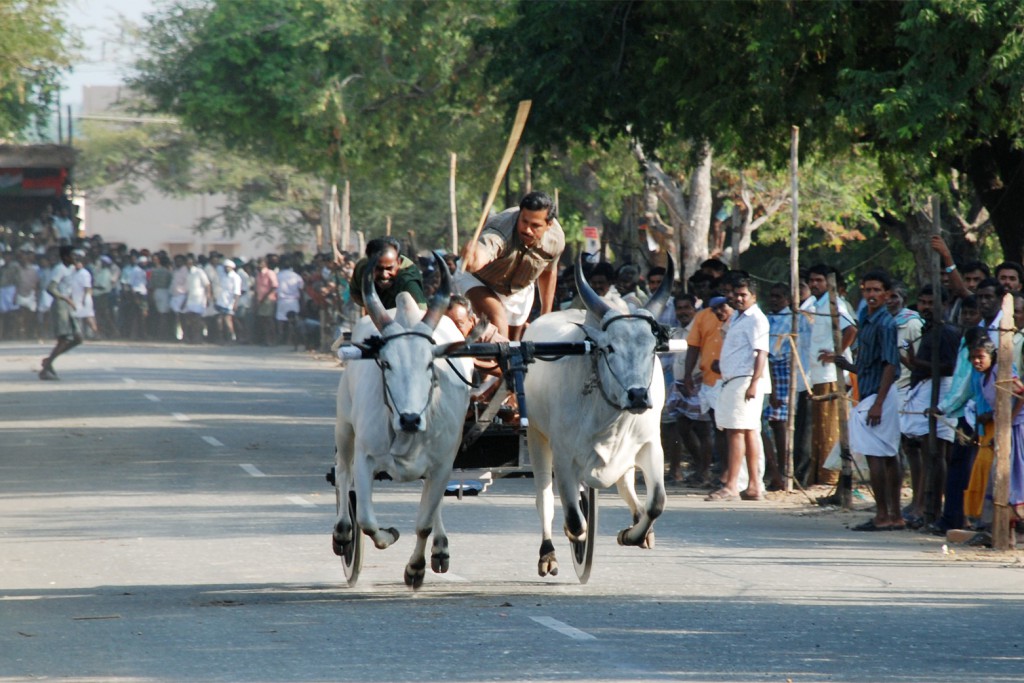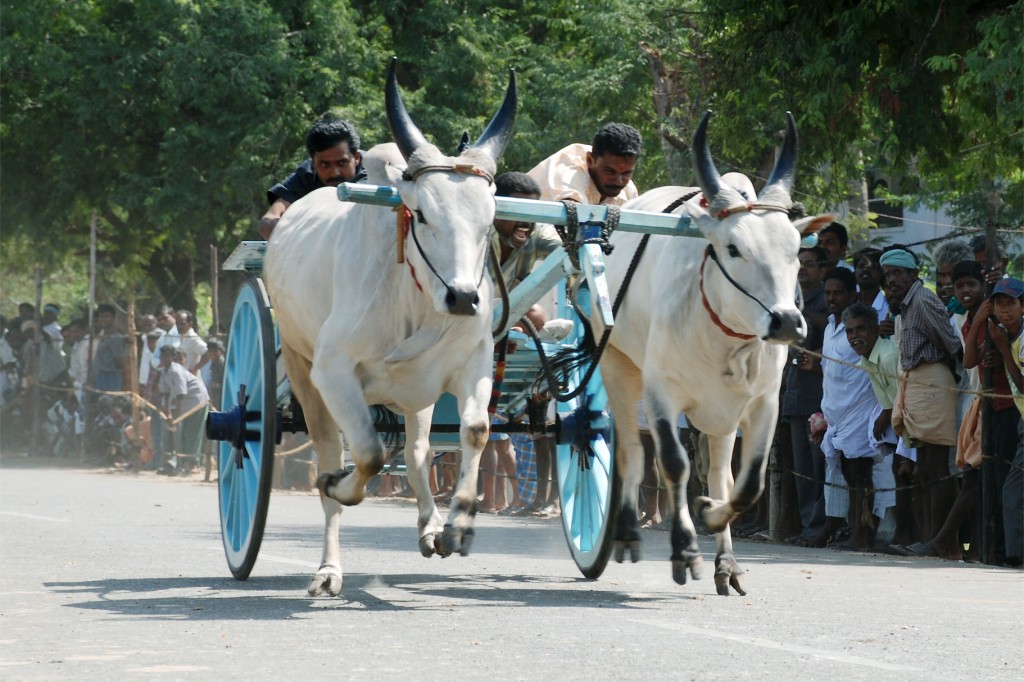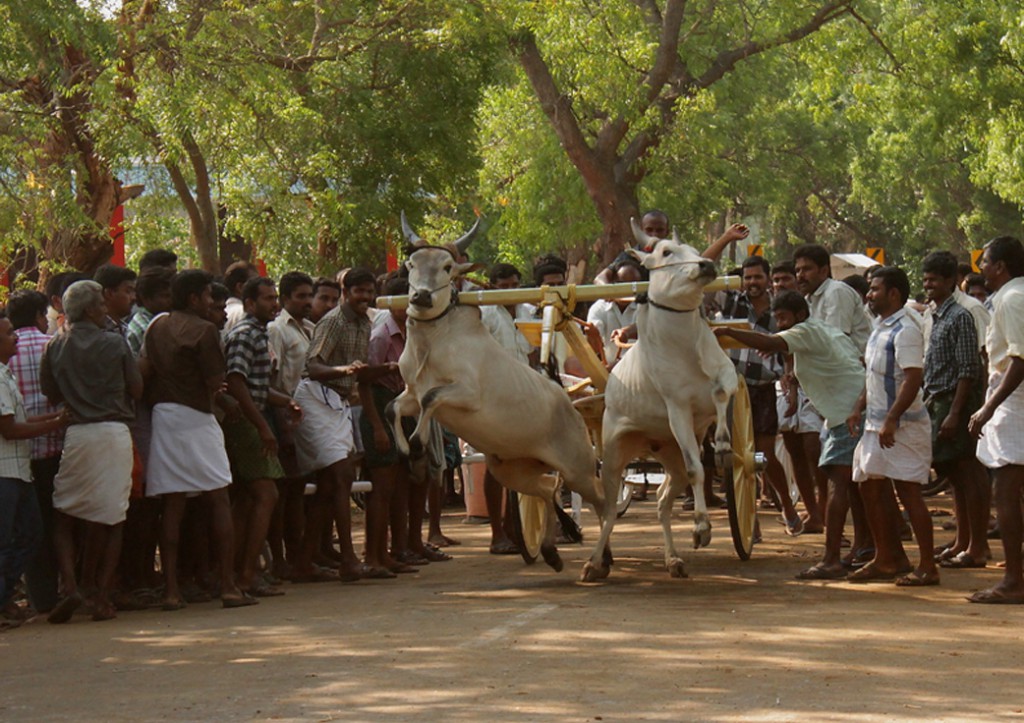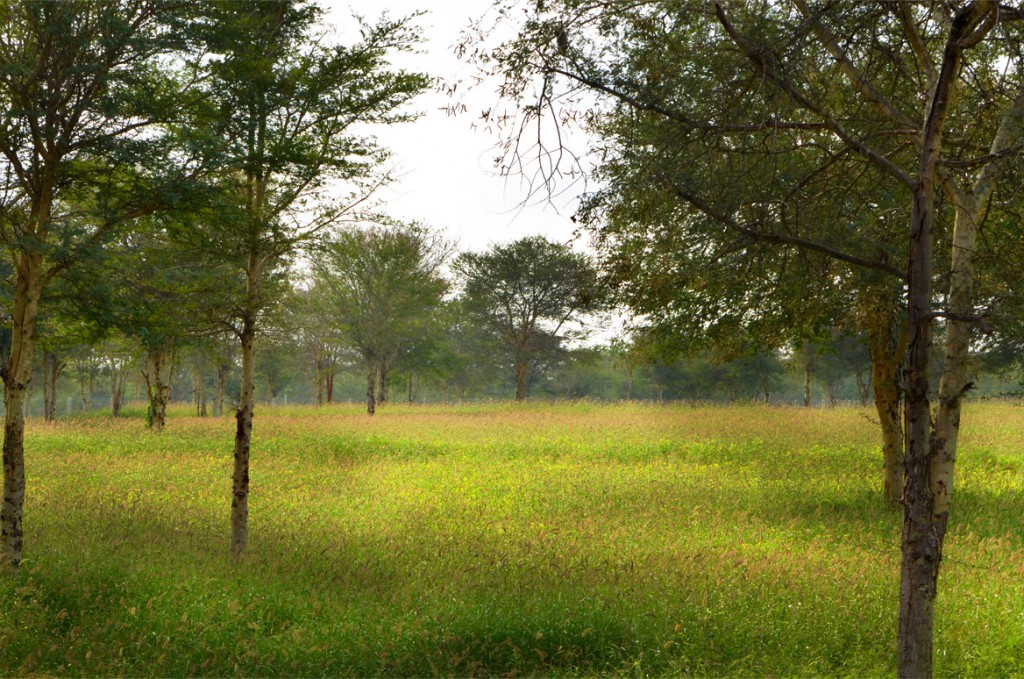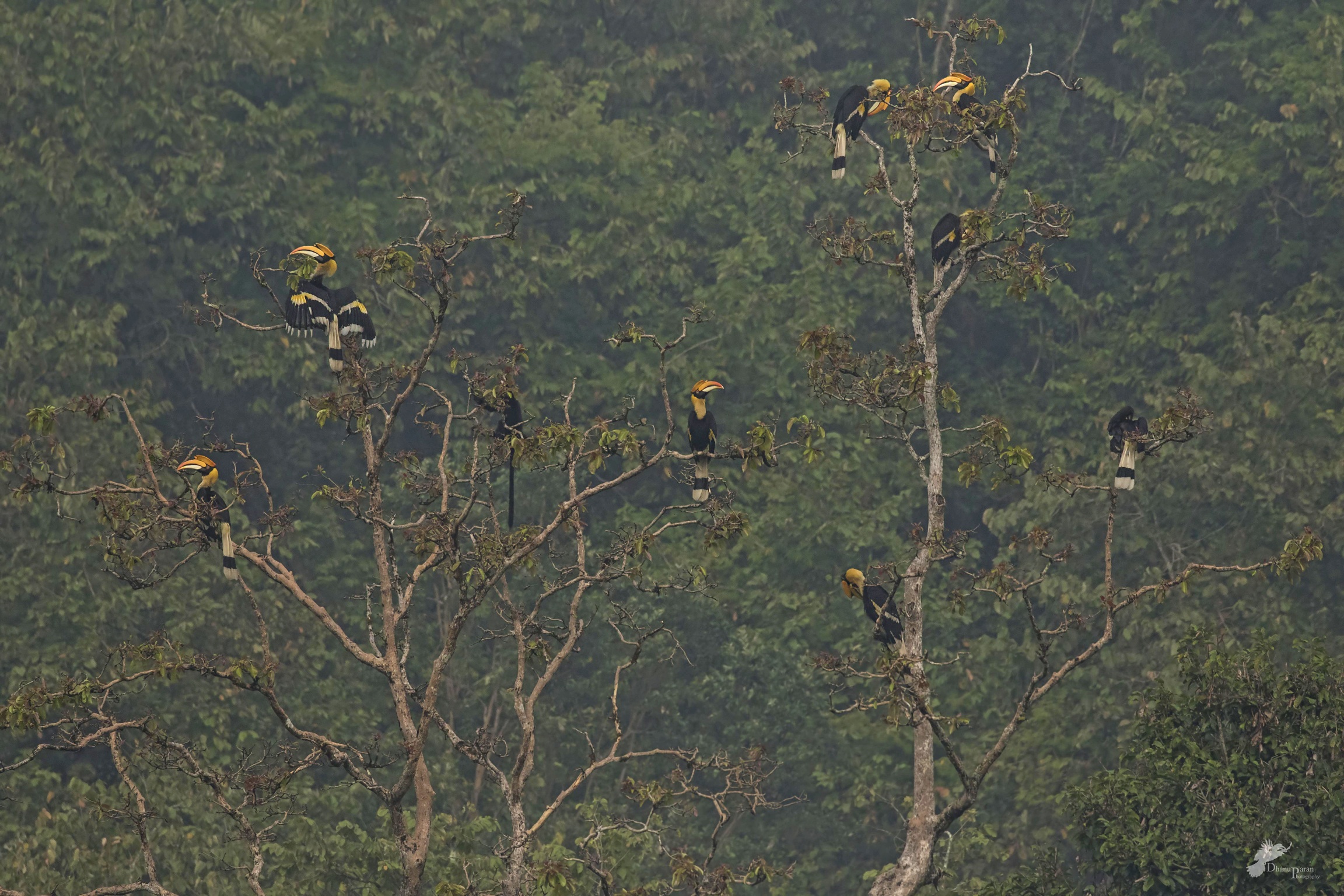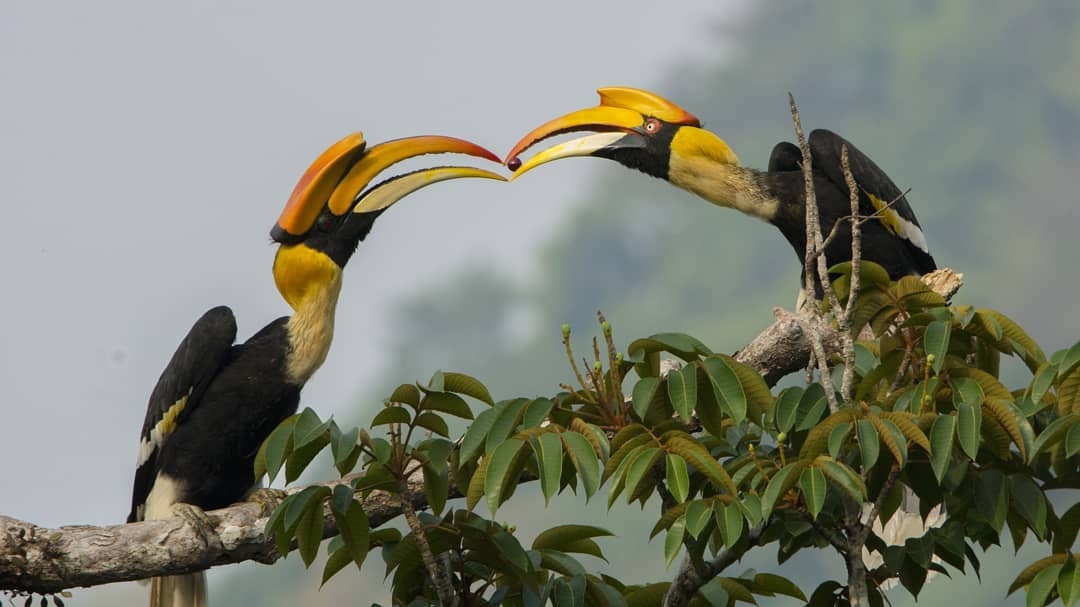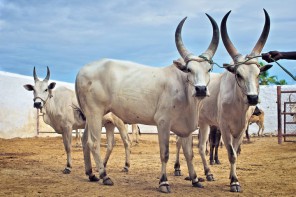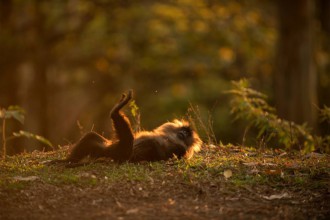The dwindling Wealth of the Yoke:
Photo Credits : Viren Mohan, Sundar Ganesan and Dhanu Paran
The Hon’ble Supreme Court of India recently issued a landmark verdict, banning the use of bulls for entertainment purposes including jallikattu, rekla (bullock cart) races and horse-and-bull races. While many are protesting to revoke the ban, some are in search of exploring alternate sustainable ways of rearing these native breeds of bulls and cows to prevent them from going into extinction.
In our January edition of 2015, we invited Mr.Karthikeya Sivasenapathy, managing Trustee , Senaapathy Kangayam Cattle Research Foundation, Kuttappalayam to pen his views on the ban, to analyze the subject in-depth.
Rekla race involves getting race bulls to lug makeshift carts a certain distance, the winners are given prizes, and just like jallikattu, this sport used to be popular during the three-day Pongal festival. Source – Hindu

Understanding the Interplay of Nature and Culture:
Evolution of breeds and varieties are a product of complex interplay of Nature and Culture. The human element is extremely important for the evolution and continuity of a breed or variety. Inspite of the large scale transformation and decline of agriculture in the region, there is still a demand for the Kangayam and other Native breeds not only from Tamilnadu but also the states of Kerala, Karnataka and Andhra Pradesh for its draught power. The breed has also been exported to Brazil, Malaysia, Philippines and Sri Lanka. The Ongole, Kangayam, AmirthaMahal, Hallikar, Krishna Valley, Alambadi found in various breeding tracts of Southern India and lesser known BargurMalaimaadu (in Erode), Manapparai, Umbalamcherry, Pulikulam, have distinct physical features and stand as a testimony to human ingenuity mediated through traditional knowledge.
Threats to the Native breeds and pasture lands:
Official figures show, Tamil Nadu has lost more than 10lakh hectares of agricultural lands between 1991 and 2003. This has led to phasing out or abandonment of farming as a livelihood.
Korangaadu means uncultivated managed dry land set aside for cattle to graze. Many of these korangaadu are natural permanent pastures. The recent globalization policies have led to rapid industrialization and urbanization leading to conversion and shrinking of area under Korangaadu (pastoral lands) into real estate and establishment of industrial units or converting the grazing lands to intensify agriculture. Another important factor is the wrong classification of Korangaadu as wasteland; rather it should be classified as pasture lands.
Apart from the rapid decline of pasture lands; the bulls have been replaced by tractors and other modern technology. The Native breeds however gained popularity by way of Jallikattu and Rekla race, both considered prestigious and passionate farmer sports, attracts thousands of participants and viewers each year. But with the recent ban of jallikattu and the races, these bulls are fast vanishing towards extinction and are being sent to the slaughter houses for Meat.
Way Forward:
A few important scientific studies have been conducted which are very much in favor of Kangayam Cattle and other native breeds for varied purposes. There is a need to explore alternative uses for the Native breeds to ensure their continuity. Another important area and relevance is the use of its dung and urine for organic farming. Urine and cow dung is used to make Amirthakaraisal, Jeevamrutham, Panchakavyam, Vembuastram, Agniastram as alternatives to NPK and pesticides. There is also a growing popularity and demand for farm yard manure due to the increased awareness among farmers and consumers about the benefits of consuming environmentally friendly agricultural products, which can aid in the sustainable use of Native breeds.
Importance of Conserving Native Breeds:
The cows and bulls belonging to the native breeds have low water requirement and have better capacity to withstand higher temperatures, having a low basal metabolic rate resulting in a low feed requirement, high disease resistance and high resilience and adaptation to climate change and conditions. In addition, the milk has health value as it is very rich in poly unsaturated fat.
Wealth of the Yoke:
The Wealth of the Yoke has always been an important theme in Tamil literature and also surfaces in inscriptions. While romanticizing the past, the value of animal genetic resources goes far beyond their current use as they provide options for future. Time and again, conservationists have acknowledged the importance of traditional knowledge and practices of local communities. These practices are a mix of age old wisdom and new ideas and go beyond the realm of modern science and strongly rooted in culture. The problem is traditional knowledge being replaced by modern knowledge without taking the broader holistic view into account, the factors that have become detrimental to the environment and endangering the very existence of the breed and pasture lands.
Threats such as industrialization, abandonment of these breeds have opened the lands to be preyed on by realtors, sandwiched by narrow interpretation of Government policies is likely to erase the knowledge of local communities, leaving no trace of heritage and history except on paper. Only a matter of honor and pride prompts a few farmers to hold onto the Kangayam cattle and the Korangaadu grazing lands. State support is essential for the continuity of the Native breeds.
Sustainability seems to be the popular buzzword of our present era. The science of animal production has advanced to the state where knowledge exists on how to maximize many of the components involved with livestock performance. Much of the present conflict between livestock,environment and humans is perhaps described with considerable accuracy in the following quote
“..that once plants and animals were raised together on the same farms – which therefore neither produced unmanageable surpluses of manure, to be wasted and to pollute the water supply, nor depended on such quantities of commercial fertilizer. The genius of the farm experts is very well demonstrated here: they can take a solution and divide it neatly into two problems.”


